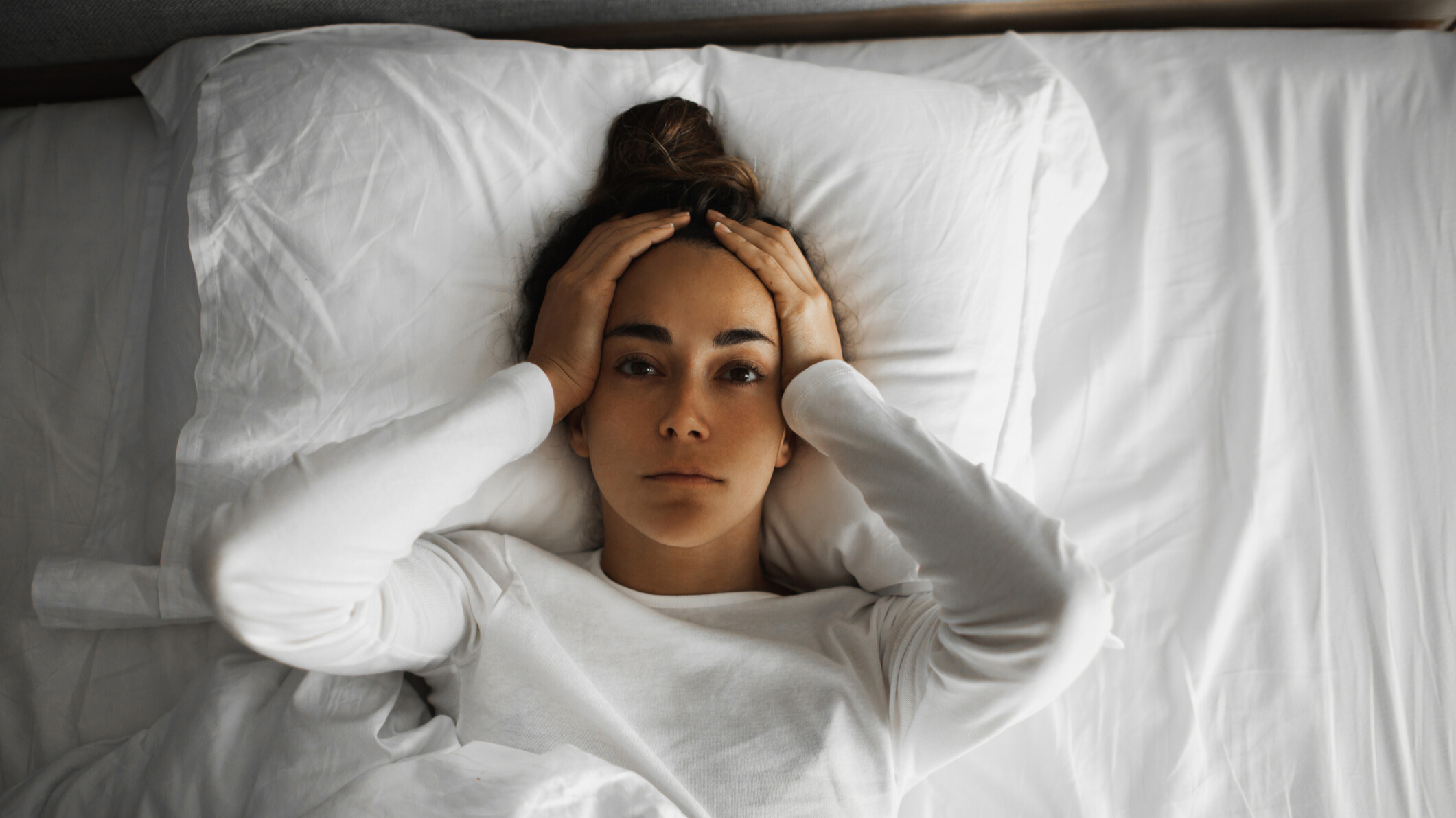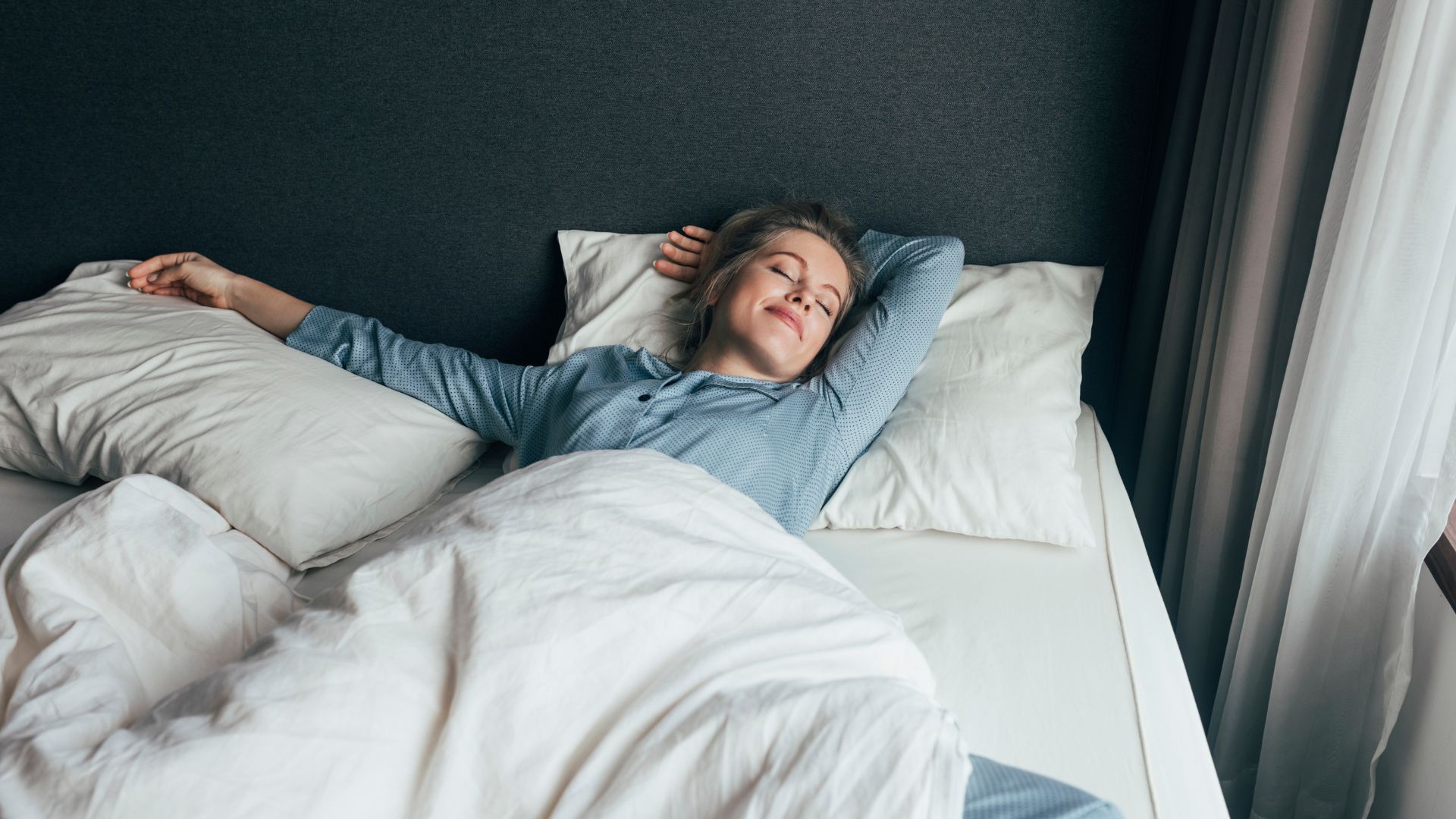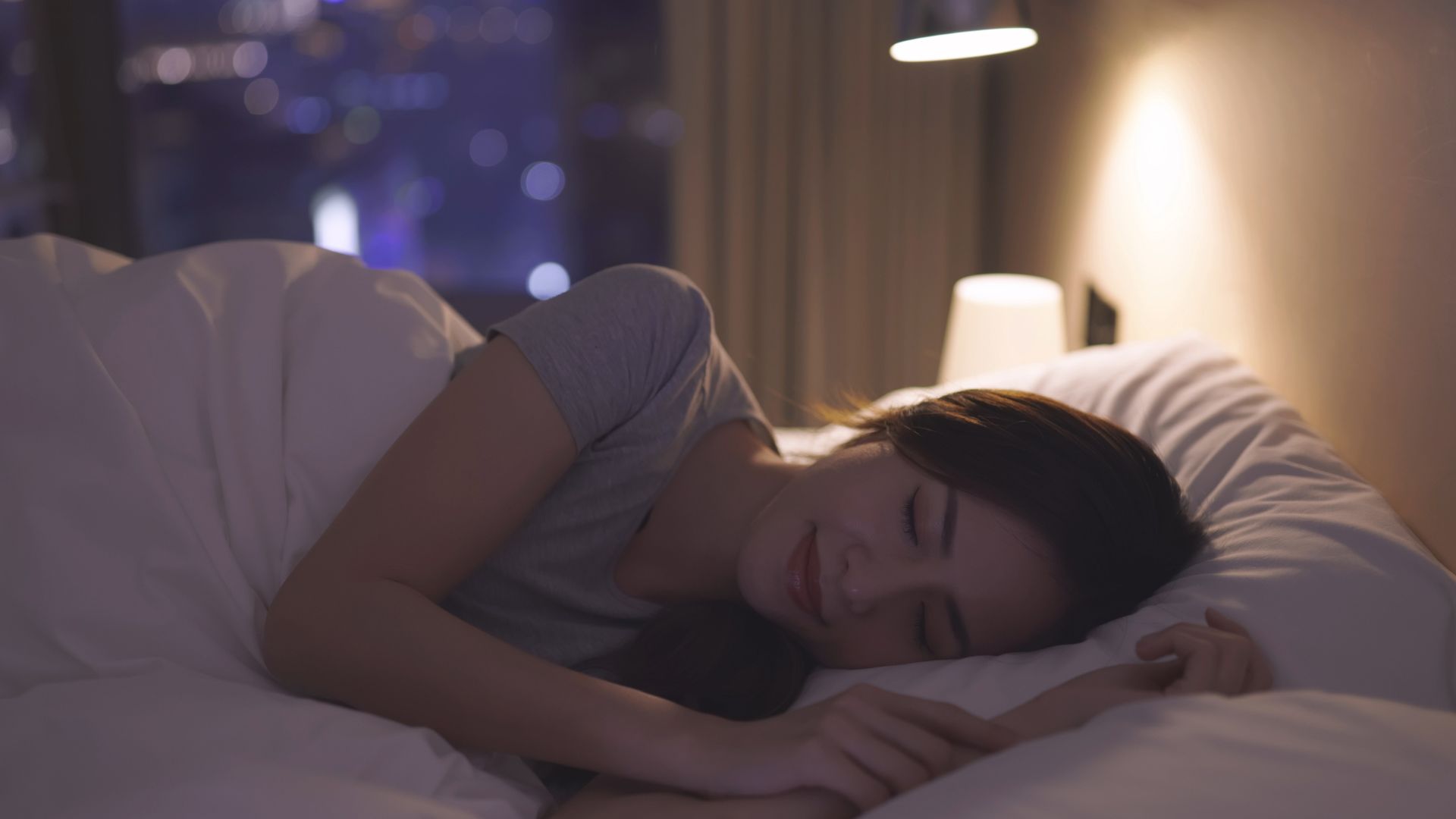Cognitive shuffling or Military Sleep Method? Expert explains which sleep hack will work for you
These sleep visualization techniques can help you fall asleep fast

Fall is here and winter is soon to follow. While it's a cozy, hibernation season, dark mornings, dropping temperatures and the clocks falling back can make sleep difficult. So I'm not surprised if you're on the hunt for sleep techniques that’ll have you clocking a solid 7 to 9 hours of sleep each night.
Sleep visualization could be up your alley, especially if a racing mind gets in your way of falling soundly asleep. For those unfamiliar, sleep visualization is a relaxation technique that involves imagining a peaceful setting or scenario to quiet the mind, reduce stress, and help you fall asleep faster.
According to Dr. William Lu, MD, a sleep medicine physician and the medical director at digital sleep clinic Dreem Health, sleep visualization engages the senses to distract your mind from racing thoughts.
“Early studies suggest it can shorten the time it takes to fall asleep,” he shares. Others show mixed effects depending on the individual.
Still, some people swear by these techniques — and two of the most popular options include cognitive shuffling and the military sleep method.
Keep reading to learn more about each and see which sleep visualization technique could be best for you.
What is cognitive shuffling?
“Cognitive shuffling involves mentally cycling through random, neutral words or images to interrupt rumination and quiet racing thoughts,” says Dr. Lu. The sleep visualization technique was developed by Canadian cognitive scientist Luc Beaudoin.
Get instant access to breaking news, the hottest reviews, great deals and helpful tips.
Per Beaudoin, if your cerebral cortex (part of the brain responsible for reasoning, problem solving, and emotional processing) is actively trying to attribute meaning to things, then the brain hasn’t received a signal that it’s safe to fall asleep yet.
With cognitive shuffling, the randomness of the words, images and objects you envision allows this part of the brain to settle down and thus get the cue that you’re safe to snooze.

“Neurobiologically, when you practice cognitive shuffling, you’re shifting activity away from the brain regions responsible for repetitive worry,” Shebna N. Osanmoh, a board-certified psychiatric nurse practitioner, previously explained to Tom’s Guide.
In 2016, Beaudoin and his team decided to study cognitive shuffling, aka serial diverse imagining task (SDIT), in female college students. The study found that SDIT was just as effective as a pre-bedtime ritual of journaling worries and possible solutions for 15 minutes.
The researchers also pointed out that the journaling task has to happen before bedtime for a set amount of time, while cognitive shuffling doesn't have these limits.
There are different takes on cognitive shuffling you can try, but this is a popular method:
- Choose a simple, neutral object and visualize it (such as a mattress).
- List and visualize as many other objects as you can using each letter of that word at a time. (For example: manatee, mixer, mud, and map, before going with A-lettered words and so on.)
- Continue the pattern then choose a new word to begin a new cycle.
What is the military sleep method?
The Military Sleep Method began as a technique to help combat soldiers fall asleep fast when they had the opportunity to clock in some rest. It was first discussed in the 1981 book Relax and Win: Championship Performance by Bud Winter. It’s since exploded as a popular sleep visualization technique for the masses.
“The Military Sleep Method focuses on progressive muscle relaxation (PMR), controlled breathing, and visualization to release physical tension and slow the body’s stress response,” says Dr. Lu.
Though it's worth noting that unlike PMR, you simply release any tension in certain areas, rather than first tensing your muscles first. There are two different scenarios you can imagine: laying down in a canoe in a tranquil lake under a clear sky OR laying on a black velvet hammock in a black room.

Progressive muscle relaxation helps to relieve physical tension, and alongside deep breathing also helps to transition from the sympathetic nervous system (aka the fight-or-flight response) to the parasympathetic nervous system (aka the rest-and-digest phase).
Meanwhile, visualization redirects focus from worries or racing thoughts to a calm and tranquil setting.
Here’s how to try the Military Sleep Method:
- Release tension in your face, drop your shoulders, and keep your arms and hands relaxed by your sides.
- Exhale to relax your chest.
- Relax the muscles in your legs and feet.
- Imagine a soothing, warm sensation washing over your body.
- Inhale and exhale as you clear your mind of all thoughts.
- Imagine that you’re (a) laying down in a canoe in a tranquil lake under a clear sky OR (b) laying on a black velvet hammock in a black room.
- If thoughts arise, repeat the words “don’t think” in your head for 10 seconds.
- Repeat until you drift off to sleep.
Cognitive shuffling vs Military Sleep Method: Which works best?
The Military Sleep Method is said to help you fall asleep in two minutes flat. While it takes consistent nightly practice — up to six weeks, on average — to master it, once you do, it promises to be superior for sleep onset latency (aka the time it takes you to fall asleep).
However, that doesn’t mean that cognitive shuffling doesn’t have its merits.
After all, cognitive shuffling is easy to do, doesn’t require practice or skill, and has the potential to leave you snoozing faster with your first try. It’s also suitable for those who don’t struggle with body tension and simply need a technique to loosen their grip on rumination and worry.
These points considered, Dr. Lu notes that some sleep visualization research shows little to no benefit in practice. “Most evidence relies on self-reported outcomes and small sample sizes, so while promising, it’s not conclusive,” he shares.

Which sleep visualization technique is right for you?
“Cognitive shuffling and the military sleep method both aim to help people fall asleep faster, but they work in different ways and may suit different types of sleepers,” says Dr. Lu.
Cognitive shuffling may be ideal for you if you struggle with a busy or anxious mind. “Personality also plays a role, as people who are more verbal or analytical often find the shuffling technique easier,” he shares.
People who are more verbal or analytical often find the shuffling technique easier
Meanwhile, “More physically attuned individuals may prefer the body-based military routine,” Dr. Lu continues.
The Military Sleep Method is a better choice if your physical tension gets in the way of falling asleep. It may also be more beneficial for those on irregular sleep schedules (such as shift workers) or in difficult sleep scenarios (like sleeping on a plane), as it’s designed to work in even the most challenging sleep conditions.
Still, Dr. Lu takes care to note that you should manage expectations with these sleep visualization techniques. “Ultimately, neither is a guaranteed fix, but both can be useful when practiced consistently and paired with good sleep habits,” he shares.

How long should it take you to fall asleep?
“For most healthy adults, falling asleep typically takes about 10 to 20 minutes after lying down in a dark, quiet, comfortable environment,” says Dr. Lu.
While the Military Sleep Method is said to help you fall asleep in only two minutes, that’s not necessarily ideal.
For most healthy adults, falling asleep typically takes about 10 to 20 minutes
“Falling asleep almost immediately (under 5 minutes) or taking much longer than 30 to 45 minutes on a regular basis can signal underlying issues,” he continues.
For instance, falling asleep as soon as your head hits the pillow can signal exhaustion and may be a sign of sleep deprivation, while a much longer sleep onset latency could point to a sleep disorder or greater health concern.

In addition to falling asleep too fast or not falling asleep quickly enough, other clues can signal that it’s time to consult a sleep specialist. Per Dr. Lu, these include:
- Frequent nighttime awakenings or trouble falling back asleep.
- Daytime sleepiness or fatigue despite getting 7 to 9 hours of sleep.
- Loud snoring or gasping (signs of sleep apnea).
- Restless or uncomfortable legs.
- Persistent anxiety about sleep that worsens the problem.
If you’ve invested in the best mattress, hacked your nighttime routine, and set up an optimal bedroom environment and still struggle with one or more of these issues, be sure to consult a sleep specialist or medical professional.
Michele Ross is a freelance writer based in Los Angeles. For Tom's Guide and TechRadar, she interviews medical experts for sleep tips and tricks, as well as reviews mattresses and toppers to see which ones are truly worth buying for different types of sleepers and budgets. She has also covered a range of sleep topics for publications and brands including Well+Good, HUM Nutrition, and Mini Bloom, among others.
You must confirm your public display name before commenting
Please logout and then login again, you will then be prompted to enter your display name.

